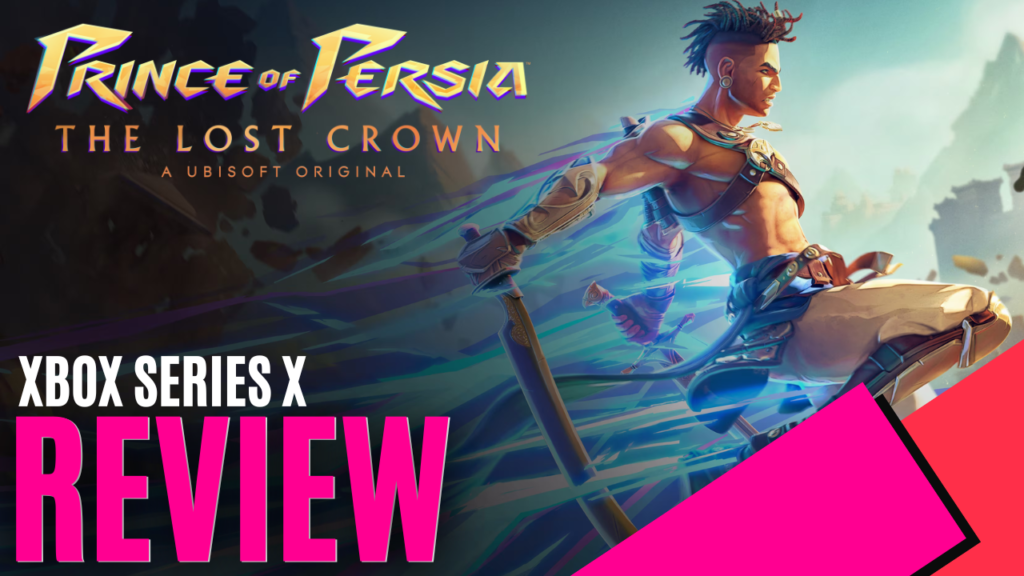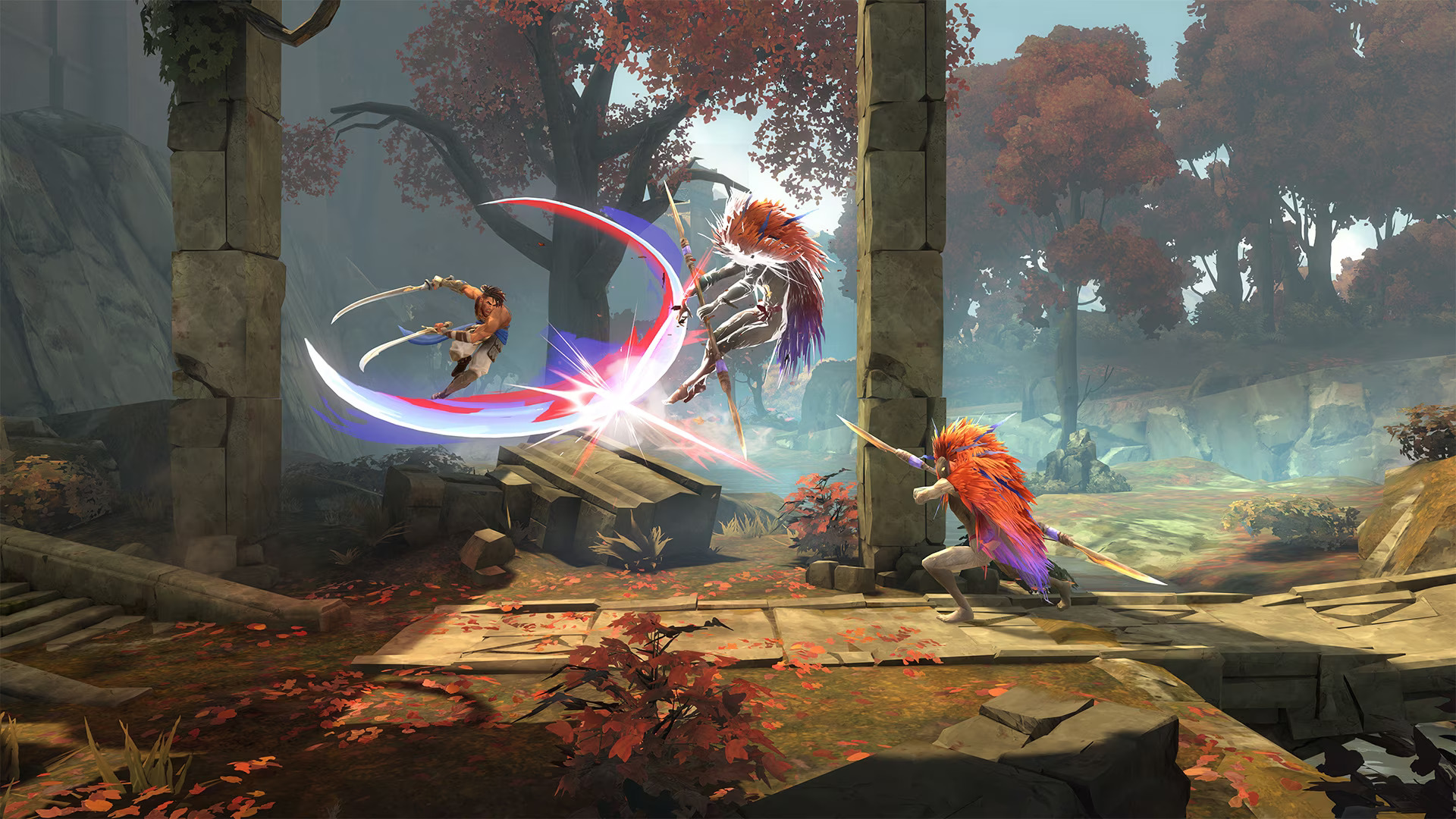
Prince of Persia is a franchise that has gone through many changes and redesigns. It has even been through various publishers and developers since its humble beginnings in 1989, making it one of the true classics. The series was created by the legendary Jordan Mechner. It started as a 2D side-scrolling platformer on the Apple II, and finally entered the 3D era in 1999 on Windows and Dreamcast as Prince of Persia 3D.
It was acquired by Ubisoft and rebooted into the highly successful trilogy in 2003 subtitled The Sands of Time, Warrior Within, and The Two Thrones. It had another reboot in 2008 and went back to the previous continuity in 2010 subtitled The Forgotten Sands, making it the final game, until now. 14 years later, Prince of Persia finally gets a brand-new entry, as Prince of Persia: The Lost Crown available on Xbox Series X|S, Xbox One, PlayStation 4|5, Nintendo Switch and PC.
The latest game begins a whole new continuity as players take control of the new protagonist, Sargon, who was trained as a human weapon to serve Persia. After experiencing betrayal from a close ally who aids in the kidnapping of Prince Ghassan, he and the other Immortals set off on a mission to the cursed city of Mount Qaf to rescue the heir to the throne. Along the way, Sargon will face many challenges and encounter various mysteries, dungeons, death traps and deadly foes, but Sargon will stop at nothing to save Prince Ghassan and free Mount Qaf of its curse.

The series began as a 2D side-scroller and the latest game is a throwback to its early 8-bit days, going in a 2.5D route with Metroidvania-style gameplay. There will be plenty of combat and plenty of platforming, which thankfully isn’t as difficult and unforgiving as the classic games in the series. Sargon comes armed with two swords and will acquire more weapons and new abilities along the way.
The combat feels very smooth and responsive as players will encounter enemies of various shapes, sizes, skills, and abilities. Players will need to do more than just hack and slash the enemies, as depending on who they come up against, will also need to strategise by parrying and dodging incoming attacks, and look for openings to take down their foes. The same goes for the boss battles which will keep players on their toes, as they take on gigantic warriors wielding different weapons and magic either on foot or horseback, and even oversized beasts and demons. Depending on the difficulty set by the player, the game puts a big emphasis on strategy over brute force to gain victory in every battle, providing an exciting and exhilarating combat experience.
Between each battle, players must also make their way through countless obstacles filled with all kinds of death traps. Even though the platforming aspect is not as difficult and unforgiving as the early 8-bit games, they still provide a challenging experience and test the players’ focus and reaction timing. The 2003 game introduced the ability to reverse time, helping them get out of sticky situations and solve puzzles, which made it one of the franchise’s most unique features. That feature has been brought back in a slightly different way, which players can utilise in combat and platforming, and now plays an even more significant role in the story, which unfolds as players progress through the game.

New attacks and abilities can be unlocked via the skill tree and story progression, which will come in handy in the challenges later. Athra’s Glow is a meter that builds up with successful parries to unleash special abilities, Rush of the Simurgh allows players to dash forward on foot or in the air and Shadow of the Simurgh places a shadow marker, a temporary checkpoint that players can teleport to.
Equipping talismans will alter Sargon’s abilities such as giving him extra health and dealing extra damage, and more talisman slots can be earned throughout the game. Players will have a variety of options to best suit their playstyle and aid them on their quest or give themselves an even more challenging experience.
The overall art style has a very graphic novel feel that compliments the Middle Eastern setting with beautiful architecture, weapons, and armour details. The well-acted cutscenes help provide an even closer look at all those details. Unlike most of the previous games, there is a large cast of characters with diverse personalities, creating a livelier and colourful atmosphere despite the circumstances.
The music has a very orchestral soundtrack with traditional Middle Eastern tunes, perfect for the game’s theme and has something for every occasion. While it may be a product of its time, we do miss hearing ‘I Stand Alone’ by Godsmack, but for those who pre-ordered the game will receive the bonus Prince skin from 2004’s Prince of Persia: Warrior Within.
The voice actors all do an incredible job bringing the characters to life, though giving them more Middle Eastern accents would add to the authenticity of a Middle Eastern-themed game. There are a few audio languages available including Farsi, the native language of Persia, which today is known as Iran.

Hearing the characters speak in their native tongue feels the most natural, making it a great option to have. Of course, subtitles in multiple languages are available too. The full voice cast hasn’t been officially revealed yet, but it will be interesting to see who they are, especially the Farsi speakers.
Due to the success of Assassin’s Creed, Ubisoft redirected their focus on making that series their premiere action-adventure game and sadly Prince of Persia was put to the side. While it’s great to finally see a brand-new Prince of Persia game after 14 long years, another reboot that completely changes the genre isn’t quite what the fans have been asking for. The trilogy from the early 2000s was when the series hit its peak.
That’s not to say this is a bad game, it’s a fantastic game in fact, but a lot of longtime fans won’t be accepting of the changes, such as the new story with no connection to the popular trilogy, going to a 2.5D format and that this time, the Prince isn’t the playable character, but the one you need to rescue. Only time will tell if the newest Prince of Persia game becomes a success and revives a long-forgotten franchise.
Ubisoft is one of the leading brands in video games today with a library of successful franchises but doesn’t seem to realise the gem and piece of gaming history they have in Prince of Persia. While we can’t say “The Prince is back” since it’s not The Prince you’re playing as, finally getting a new Prince of Persia game after 14 years is still a good feeling. Even if it’s another reboot with a different genre, the latest entry in the legendary franchise is still a fun and challenging game, packed with loads of content with over 20 hours of playtime and plenty of replay value. Prince of Persia: The Lost Crown is an excellent way to start 2024.

The Good
- Finally, a new Prince of Persia after 14 long years
- Fun, exciting and exhilarating 2.5D combat and platforming
- Graphic novel art style and Middle Eastern setting
- Challenging boss fights
- Farsi voice acting available
The Bad
- Another reboot with a different game genre








